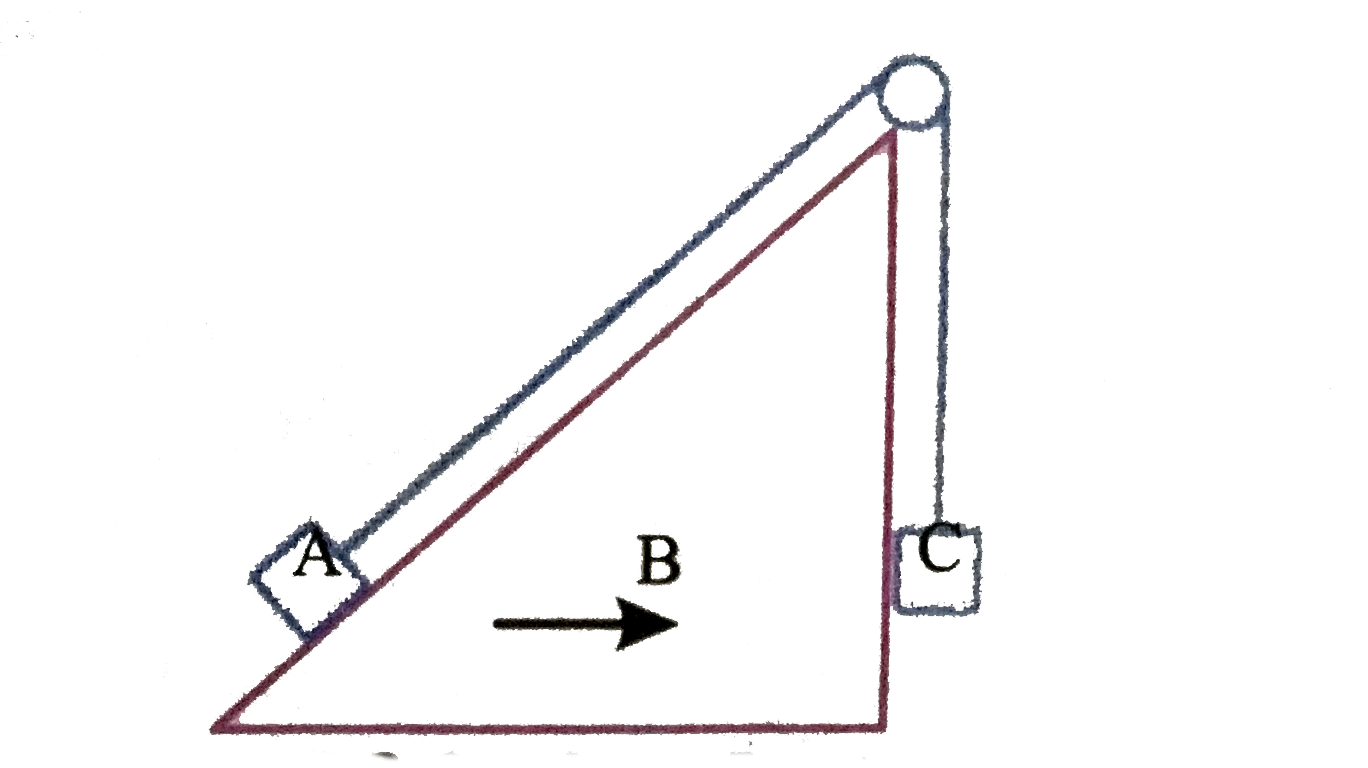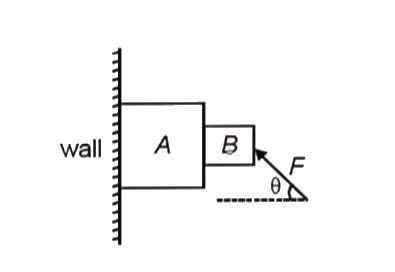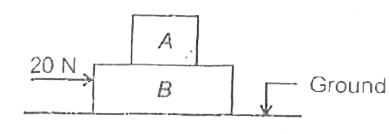
All surfaces are rough . Draw the friction force on A & B

Kinetic friction acts to reduce relative motion.
Summary
We can summarise the laws of friction between two bodies in contact as follows :
(i) If the bodies slip over each other, the force of friction is given by
fk=μkN
where N is the normal contact force and μk is the coefficient of kinetic friction between the surfaces.
(ii) The direction of kinetic friction on a body is opposite to the velocity of this body with respect to the body applying the force of friction.
(iii)If the bodies do not slip over each other, the force of friction is given by
fs≤μsN
whereμs is the coefficient of static friction between the bodies and N is the normal force between them.The direction and magnitude of static friction are such that the condition of no slipping between the bodies is ensured.
(iv) The frictional force fk or fs does not depend on the area of contact as long as the normal forc N is same.
Topper's Solved these Questions
- BOOK - MOTIONCHAPTER - NLM & FRICTIONEXERCISE - SOLVED EXAMPLE16videos
NLM & FRICTION
- BOOK - MOTIONCHAPTER - NLM & FRICTIONEXERCISE - EXERCIS-180videos
NLM & FRICTION
- BOOK - MOTIONCHAPTER - NLM & FRICTIONEXERCISE - EXERCISE-4 ( LEVEL-II)15videos
NLM & FRICTION
- BOOK - MOTIONCHAPTER - NEWTON'S LAWS OF MOTION & FRICTION EXERCISE - Exercise - 3 Section-B12videos
NEWTON'S LAWS OF MOTION & FRICTION
- BOOK - MOTIONCHAPTER - ONE DIMENSION MOTIONEXERCISE - Exercise - 3 |Section - B Previous Year Problems | JEE MAIN12videos
ONE DIMENSION MOTION
Similar Questions
Knowledge Check
- Question 1 - Select One

Block B of mass 2 kg rests on block A of mass 10 kg. All surfaces are rough with the value of coefficient of friction as shown in the figure. Find the minimum force F that should ber appplied on blocks A to cause relative motion between A and B.(g=10ms2)A24 NB30 NC48 ND60 N - Question 2 - Select One
Consider the system as shown. The wall is smooth, but the surface of block A & B in contact is rough. The friction force on B due to A equilibrium is :
 AZeroBUpwardsCDownwardsDThe system cannot remain in equilibrium
AZeroBUpwardsCDownwardsDThe system cannot remain in equilibrium - Question 3 - Select One
Consider the system shown in the figure. The wall is smmoth, but the surfaces of blocks A and B in contact are rough. The friction on B due to A in equilibrium is
 AupwardBdownwardCnot definedDthe system cannot remain in equilibrium.
AupwardBdownwardCnot definedDthe system cannot remain in equilibrium.

Blocks shown in figure moves with constant velocity 10 m/s towards right. All surgaces in contact are rough. The friction force applied by B on A is :-View SolutionIn the fig. as shown mass of each block is same. The surface are rough with coefficient of friction μ. The block B moves with acceleration a. The frictional force on the block C is k×μma. Calculate the value of K
 View Solution
View SolutionA body is thrown on a rough surface such that the friction force acting on it is linearly varying with the distance travelled by it as f=ax+b. Find the work done by the friction on the box if before coming to rest the box travels a distance s.
View SolutionConsider the situation shown in the figure. The wall is smooth but the surface of blocks A and B in contact are rough. The friction of B due to A in equilibrium
 View Solution
View SolutionConsider the situation shown in figure. The wall and the surface of A and B in contact are rough. The friction on A due to .
 View Solution
View Solution



